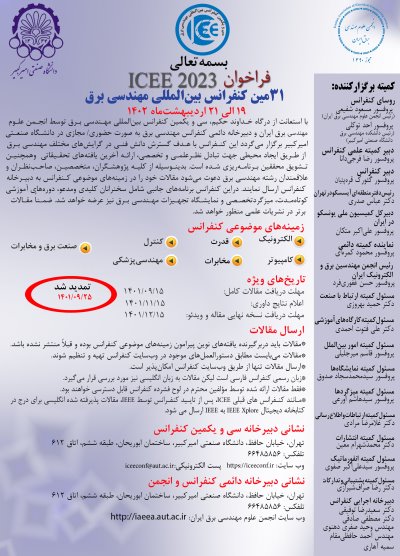0% Complete

نویسندگان :
کلمات کلیدی :
چکیده :
لیست مقالات بایگانی شده
Mohammad Jalilpour Monesi - Sepideh Hajipour Sardouie
محمدرضا قطبالدینی - احمد میرزائی - محمدمهدی منصوری مجومرد
Alireza Zabihi - Mehrzad Bidari - Hossein Mokhtari
Seyedeh Mahsa Zakipour Bahambari - Mojtaba Mohsen Haghighi - Saeed Khankalantary
Mahdi Esfandiari - Amin Rafrafi - Abolfazl Pirayesh
Nazila Loghmani - Roqaie Moqadam - Armin Allahverdy
حبیبه صمدی - حمید واحد - هادی صوفی
Motahareh BahmanAbadi - Abdolah Amirany - Mohammad Hossein Moaiyeri
Somayeh Boshgazi - Khashayar Mehrany - Mohammad Memarian
Hesamodin Allahyari - Mahdi Delzendeh SarfeJo - Hamid Bahrami - Ahmad Afifi - Aran Shoaei - Mohammad ali Latifzadeh





